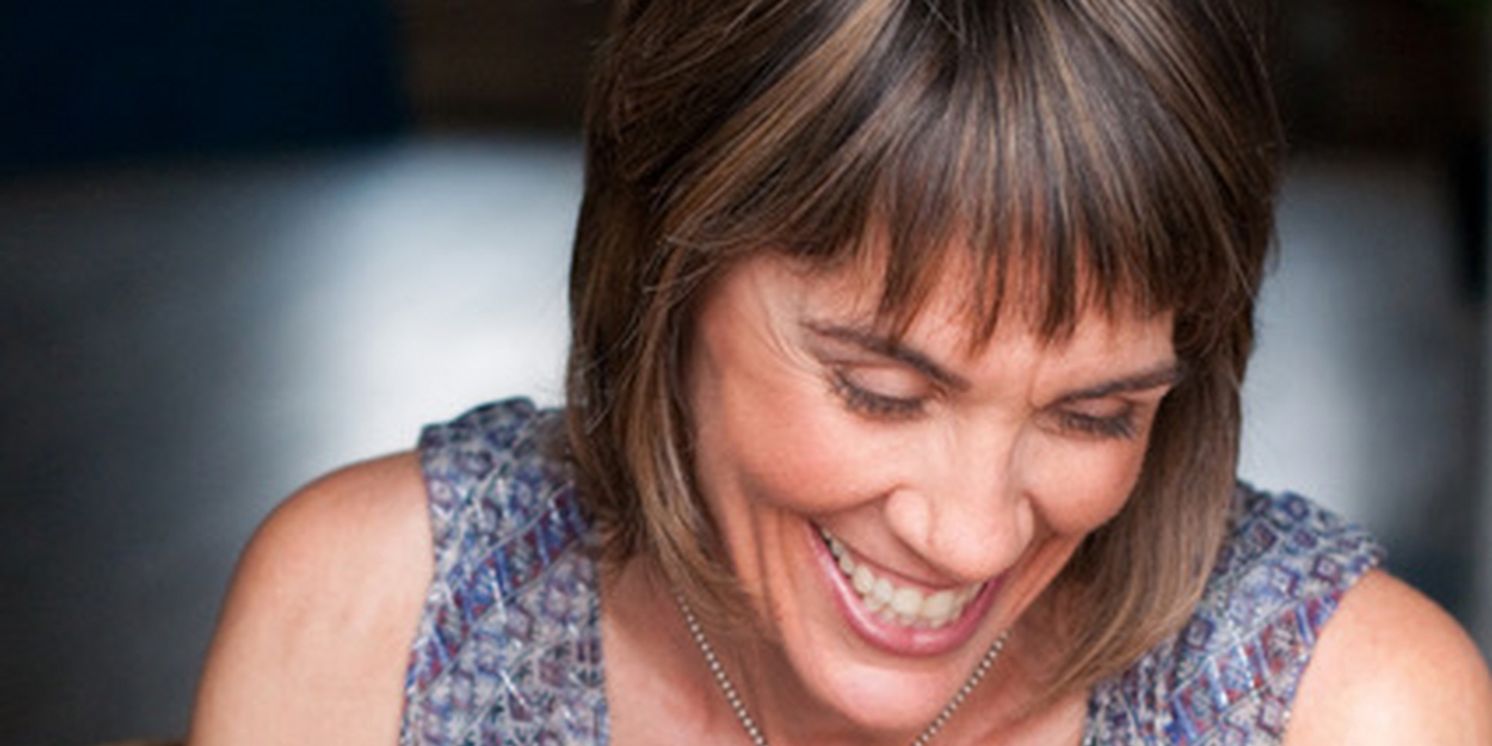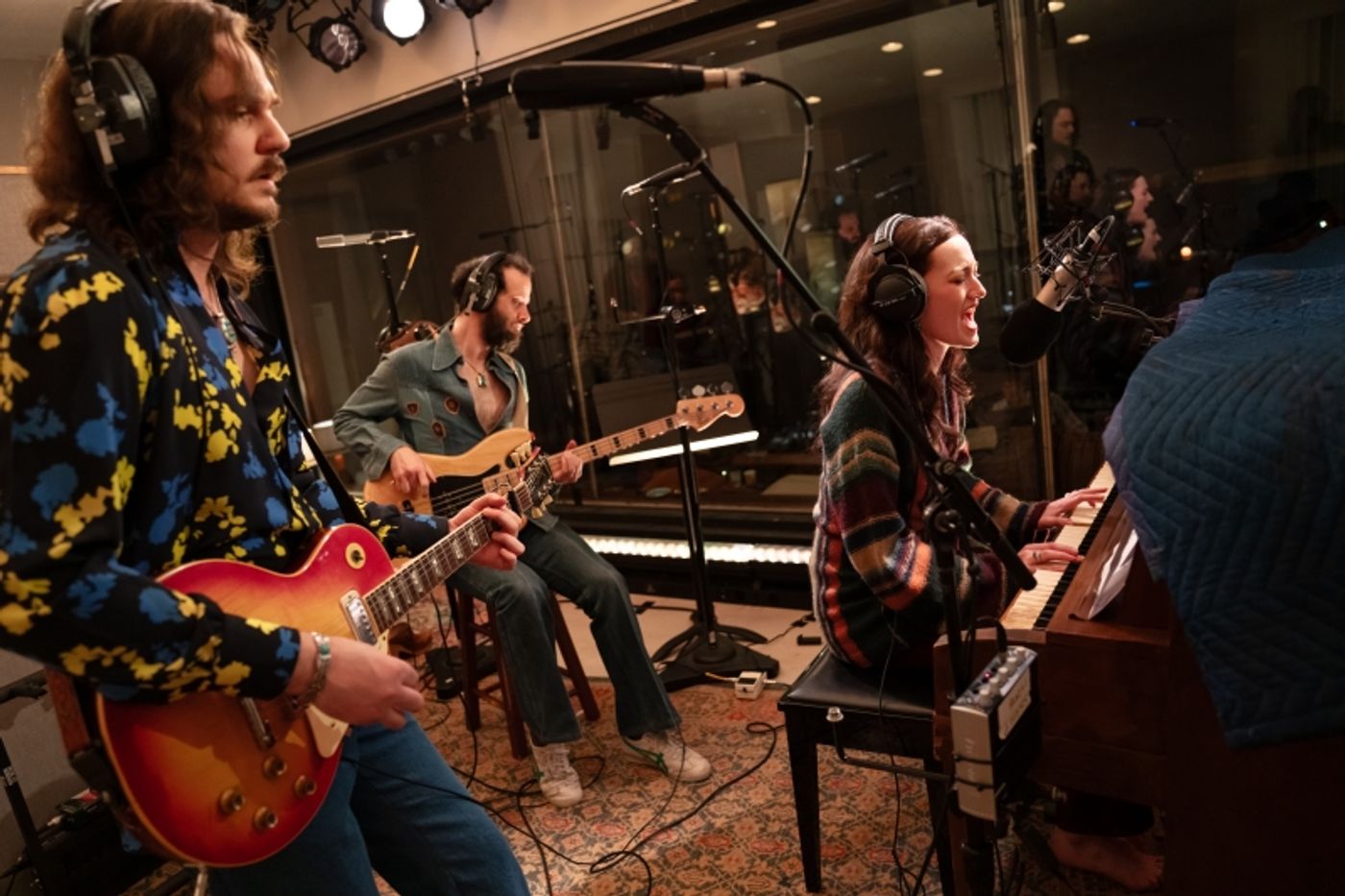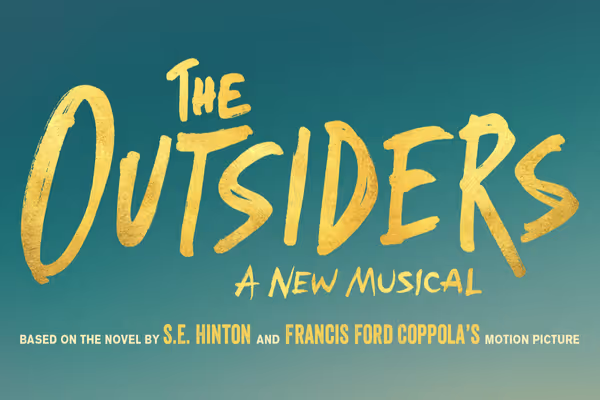Interview: Meet the Mastermind Behind Broadway Accents and Dialects, Gigi Buffington
Buffington discusses her techniques for perfecting accents and dialects, and shares insights on shaping the authentic sounds of 1960s Tulsa and the 1970s rock scene.

Gigi Buffington is a highly regarded Vocal, Text, and Dialect Coach known for her work this Broadway season on the Tony Award-winning Stereophonic and The Outsiders.
BroadwayWorld spoke with Buffington about the process of bringing to the stage the teenage turmoil of The Outsiders' 1967 Tulsa, and the 1970s rock and roll scene of Stereophonic. Learn about the process of mastering different accents and dialects, and see how Buffington's expertise helped shape the world of these shows, guiding actors to fully embody their characters.
Read the full story below!
You are a Vocal, Text, and Dialect Coach. How did you get into this type of work? Where did your interest stem from and how did you figure out that you were good at this?
Many years ago, when I was training to be an actor, I had been a modern dancer, and I loved the idea of being able to express through the mouth, through the throat. I had been working in Chicago, and I was choreographing for some theatre companies, and I thought, ‘God, this is so incredible how they not only use their bodies, but they also get to express through their voices, and language.’ And that was super interesting to me. And so, I ended up auditioning for a director who wanted me to take her acting class, which I did, and I was hooked.
In training to become an actor, one of the things I learned was that my voice was really trapped. The whole breathing system gets pretty constricted because we’re so often pulling up and tightening muscles around the rib cage, and the last thing we’re doing is letting breath drop into the low abdomen and swell for a tidal breath. So, I was bound up and I couldn’t get access to power in my voice. So, I decided that the next step in the journey, after I had done a two-year program with Maggie Flanigan at the William Esper studio, was that I needed to train my voice. And I heard about Robert Neff Williams, who had been the head of voice at Juilliard from the beginning, and he had a two-year program that you auditioned for, and if you were lucky you would get in. And this program started with 22 to 24 students in the first year, and if you made the cut for second year, it was like five people. And he extended that second year class, it was double the length of time, so it was three hours each session, twice a week. So, you were getting six hours of coaching.
And he was very closely connected to Cicely Berry in London. Whenever the Royal Shakespeare Company would come, he was the person that would work on the transfers. So, this deep dive into Shakespeare and poetry, it was like I was on fire, and I loved working on these texts. And that led me, finally, to London, to the Guildhall School of Music & Drama where I did my Masters in training actors’ voices, in a brand new program started by Patsy Rodenburg. This journey led me then to coaching at the Royal Shakespeare company for a year, which was amazing to be an American hired to work there. And then I came back to the states, and I got my job at Tisch Drama at NYU, and started coaching on and off Broadway. And it’s been 14/15 years since that happened. And I so love what I do.
What is your process as a coach? When you start working on a show, where do you begin in your research?
I think one of the reasons I love what I do so much, is that no two processes are the same. For example, Stereophonic, I had worked on a workshop pre-pandemic. My research was on the period of the 1970s, the bands that were making headlines in and around Fleetwood Mac, British singer-songwriters, and getting a sense of, 'What does that sound like?' The 1970s were a lot different than today in terms of how people in the contemporary world of rock and roll music sound. And that was the launching point, for me. I got a lot of samples of various recordings on YouTube, and listened to interviews with the band. Daniel [Aukin, director] connected me first with the three actors, the brilliant Juliana Canfield, Will Brill, and my lovely lead of the band, Chris Stack. And I talked to them, I wanted first just to introduce myself, but also ask them, “What are your thoughts? Where are you hoping to go with this character?”
From that initial point of hearing what the actors were thinking, then I started sharing material with them, they shared material with me, and by the first day of rehearsal I had a very good sense of, “Okay, this is the direction that we’re moving in.” And then it was a question of getting enough time to make sure that accents and dialects were consistent.
And then there was this whole huge other piece of Stereophonic, which is we in the audience are supposed to be a fly on the wall, and we are listening in on private conversations on a documentary, so to speak. And so, there needs to be overlapping dialogue that is sometimes not fully grasped in terms of clarity. So, if there are three different conversations happening, you’re going to get the gist of the conversations, but you’re going to miss things. In the first scene that we call the overture, that was very important to our playwright [David Adjmi], and at the same time, I knew how frustrated and upset an audience member will get when they feel that they’re not invited to the party, so to speak, that they’re missing language.
So, my job was to take this approach and do everything I could to, very subtly, help the actors understand the choreography inside of their mouths with lightness and ease, not hammering anybody over the head with, say, a medial ‘t’, which, let’s face it, the character of Diana is not necessarily going to have one given her upbringing in America and the period. Yet, at the same time, she was pretty clear, Stevie Nicks, when you listen to interviews of her, she didn’t take any crap from anybody! And so, I wanted also to honor that power, that strength that these young women had, both Holly and Diana. I mean, you’re in a band with all these men, in a very male-dominated world, and yet their contributions were, at the bare minimum, equally, if not more in important in some ways in terms of what they contributed musically.

What do the exercises actually look like when you get in the room with the actor? Is it shaping how they say the words? Is it the intention? Is it actual accents? Is it all of it?
It’s all of it. Because I feel that if you separate intention and action from the body, the breath, the onset of sound, whatever your accent or dialect, or say, no accent or dialect as is the case with some of them, like our engineers, and Tom Pecinka- there are some people who are using their mother tongue in this- that if you remove the body, the breath, the onset of sound, action and intention, suddenly you’re going to put an actor in their head, and that is death to an actor. And that I know from having trained as one.
So, say I’m leading a company warmup, which I do weekly in person, and then they have videos of me when I’m not there in person. I start with the body, and then we move into how the body and the breath intersect, and then from there we go into the release of sound and the release of the jaw, and the release of the neck, and the opening of the channels so that the vessel gets prepared whether you’re shouting, whether you’re doing a very intimate scene, you’re prepared. And then we go through a humming sequence to gently warm the vocal chords and the resonators. And what we’re doing, it’s like a hamstring stretch. If you are tight, you need to very carefully, gently stretch your hamstring or you’ll snap it. And with the heavy lift of Stereophonic, vocally, it is massive on this incredible cast.
And so, we need to be really thorough, really gentle, and have an excellent and efficient warmup that then leads into placing the voice into the theatre space, and from there into articulation, so that we get them forward-placed, we get their tongue tips moving, we get all of the articulators very free and flexible. And I check in. I notice when an actor is struggling. I have a great relationship with a fantastic ENT, and she and I troubleshoot late into the night when one of the actors has needed emergency help, and knock wood we have not missed a single show at the Golden Theatre. They’re amazing.
And moving on to The Outsiders, which takes place in an entirely different place and time, 1967 Tulsa, how did you approach that?
How I approached that, early on, going to La Jolla with the company, we decided there that the rehearsals for La Jolla weren’t going to afford the kind of time that everybody might have needed to do say, Tulsa, 1967 everybody sounding exactly the same. What I did was I provided the actors with many different ethnicities of speakers from Tulsa at that time, because our cast is multiple ethnicities. So, by going through sound changes and doing private sessions while they were in rehearsal in La Jolla, we did as much as we could do with a very limited amount of time.
Young, hungry actors, they really took it on, and they entered the world of the play. What I warned them all about: it is so subtle. The problem with Tulsa is many people who don’t know better will go further south. And sound like they are living in the south. And Tulsa is actually midwest, where a few diphthongs will shift and not complete, and they’ll become more like vowels. But it’s very subtle, and it was important to me that somebody from Tulsa, for example, Susie Hinton, who would be coming to this thing, would not be aghast, or wouldn’t leave the world of her story.
And the other thing was when we moved to the Jacobs Theatre, Danya [Taymor, director] and I had a conversation about accent and dialect. And she felt very strongly that the intuitive work that the company was doing based on what we did in La Jolla was great, and that she didn’t want to hamstring anybody with further minutia work, because for her, she felt that what we had done was create a world of our own. This Outsiders, versus the film The Outsiders. And I have to say I agreed with her, because never once did I pop out. And that’s the big thing for me, is I pop out. If my ear goes, ‘Woah!’ then I’ve left the world of the play and I’m suddenly in my head. So, it was more about period.
And a very similar obstacle which is, how do you take a group of young kids, who in the world of this play, are not a bunch of crossed t’s and dotted i’s, it’s people who are living in a lot of dust and scrap, and they are very in their bodies, how do we get that same precision in the mouths without losing character? If you’re a Greaser, part of your identity is how you speak. So, a Soc might dot their i and cross their t and use it as a weaponizing action against a Greaser, but a Greaser will only judiciously do something like that, let’s say, to mock the Soc.
Meanwhile, you’re in the Jacobs and you need to understand everything they’re saying or you’re going to lose the storytelling. So, clarity without calling attention to it, clarity where you don’t even realize you’re getting the story, but you’re totally getting it, but you’re not going, “Oh, they have really good speech!” Because our world can’t handle it. So, there are oddly similar obstacles in these two things, how our ears have to adjust from sung lyrics to spoken language that’s very casual, back and forth, that’s tricky.
.jpg?format=auto&width=1400)
There is so much work that goes into it, and it’s all so that the audience doesn’t know how much work has gone into it. What tips do you have for actors on learning accents? Where do you suggest that they start and how should they go about perfecting it?
Can I put this as part B and part A? Can I suggest something that is even more global for actors that are up and coming and they are trying to nail that audition, or they want to get that role? Two things that are key foundational. The first one is to enter that space connected to their tidal breath, and be present. Very present to the space. And the way one becomes present to the space and who’s in it, is through being present through their breath. I’m telling you, there is nothing more compelling than watching an actor take a breath. An actual breath. And it sounds so simple that it sounds ridiculous, but I can’t tell you how many people don’t do that, because, of course, their adrenaline is coursing. And when we don’t take and release a breath, we don’t connect to our humanity. That kind of behavior that everybody wants to do, and so many casting directors are looking for, it’s through the breath and through presence in the space.
And then, if you’re doing an accent or a dialect, do your research. Listen to native speakers and get as much information as you can through native speakers, and then as you’re breaking it down in whatever way that you do, pick your three key vowel changes, don’t overwhelm yourself with the whole of it. But try to get the three primary changes, and the rhythm and tune. What is the rhythm and tune of this dialect? And the entire process of learning it, speak it all day long. Speak it to your roommates, speak it when you’re at the grocery store, speak it on the subway. Don’t limit it to when you’re rehearsing or auditioning, don’t limit it to just being in rehearsal, because knowing an accent or a dialect is going to show up for you when you improvise, that’s when you know, “Oh, shit, okay I’m missing that!” I always say to people, “Go to Union Square, buy produce in the dialect.”







